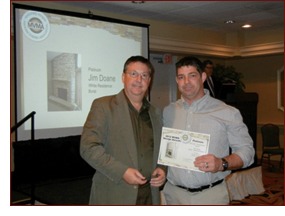May 2012: From the Editor
Words: Dan Kamys
From the Editor
 Jennifer Morrell
Editor
jmorrell@lionhrtpub.com
Jennifer Morrell
Editor
jmorrell@lionhrtpub.com
One of my favorite shows these days is “Undercover Boss,” which centers on the CEO of a company disguising himself (or herself) as a candidate for a number of different positions within the company. The companies are large in size, normally, and the positions vary from janitor to kitchen manager to tour guide, depending on the type of business.
What I love about the show is that, inevitably, the CEO walks away from the experience having learned a massive amount about his own company. First and foremost, he’s been sweating and laboring in some cases, which is a far cry from his seat behind a desk. Scrubbing toilets reminds him of just how hard people are working to keep his company going.
Second, he gets to know several employees as people, not just staffers who fill positions. As much as we complain about how hard it is to find good help, hardworking people still do exist – many times bearing unimaginable hardships in their personal lives. Sick children, extra-long commutes to work, personal illnesses – no matter what the struggle, people continue to work hard for their companies. This opens the eyes and hearts of the CEOs featured on the show.
Most important is the fact that in nearly every episode, the CEO hears suggestions from employees that will make things better. Even if resistant at first, he usually agrees with the ideas in the end. The lesson is that no one will know better how well things could work than the people on the ground floor, doing the work. In many cases, the ideas and suggestions are time and money savers for the companies’ bottom lines.
The icing on the cake comes in the form of an employee giving an honest account of the CEO and management of the company directly to the Undercover Boss. Sometimes the bosses love what they hear, but usually, they get an earful. This is an opportunity, if addressed wisely, to make happier and more product employees.
If you could go undercover and speak to your employees, what do you think you’d learn? Are you listening to your employees, or even asking them for their ideas? How much do you know about the personal lives of your employees? Do you remember what it was like to lay bricks in 95-degree heat and nurse your beat-up hands at night?
And the scariest prospect of all: How would your employees describe you as a boss? Do you have their respect, and do you give them the respect they deserve? Do you guide and teach them in a thoughtful way, or are you a dictator and a tyrant? You have an opportunity to be a life-changer for your employees – to really make a difference. Take it to heart.
 Correction
In the April 2012 issue of Masonry, Dan Mulhern was misidentified in a news article about the Masonry Veneer Manufacturers Association Awards. Dan is shown left with an award winner, Jim Doane.
Correction
In the April 2012 issue of Masonry, Dan Mulhern was misidentified in a news article about the Masonry Veneer Manufacturers Association Awards. Dan is shown left with an award winner, Jim Doane.
Return to Table of Contents